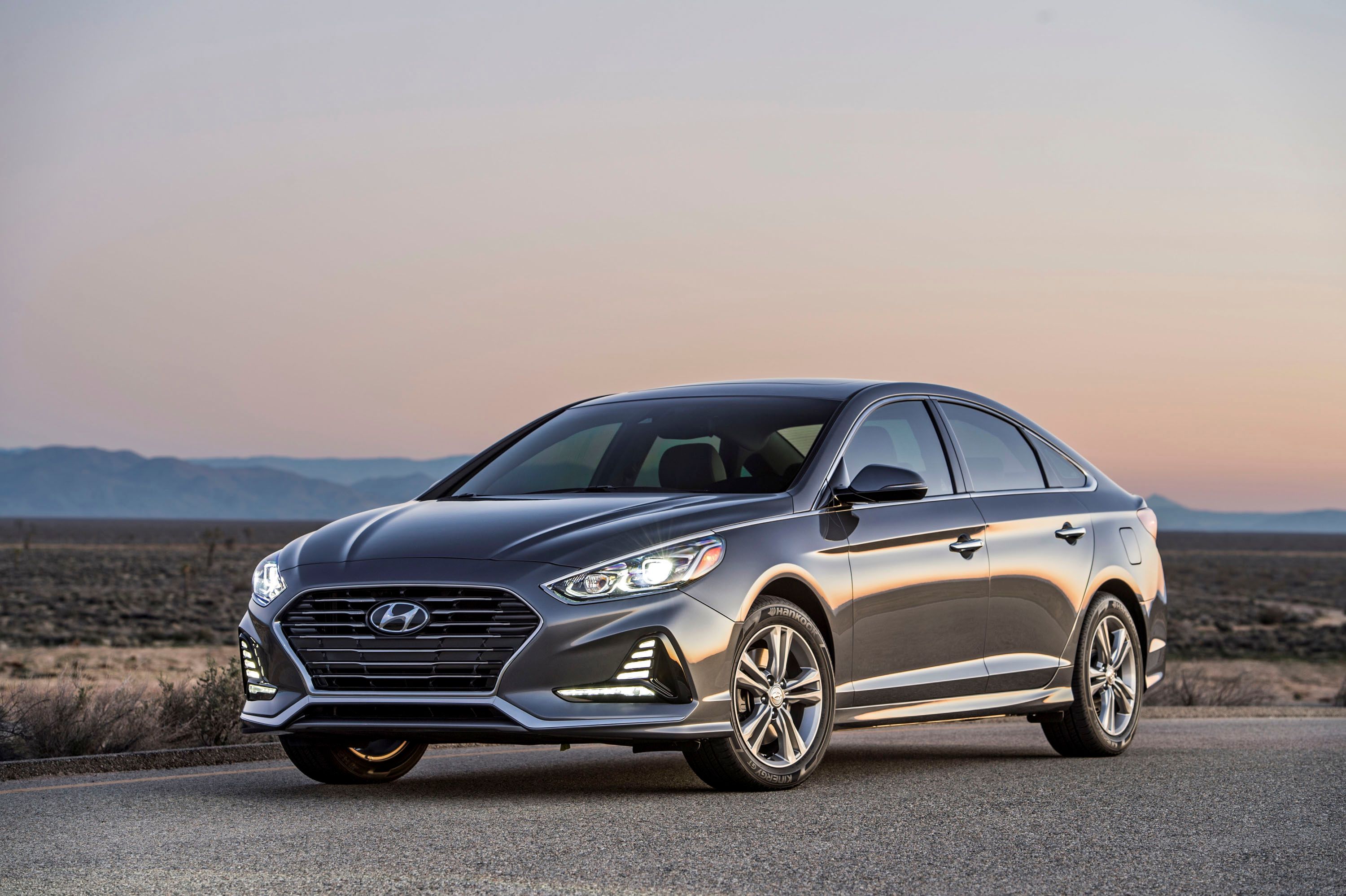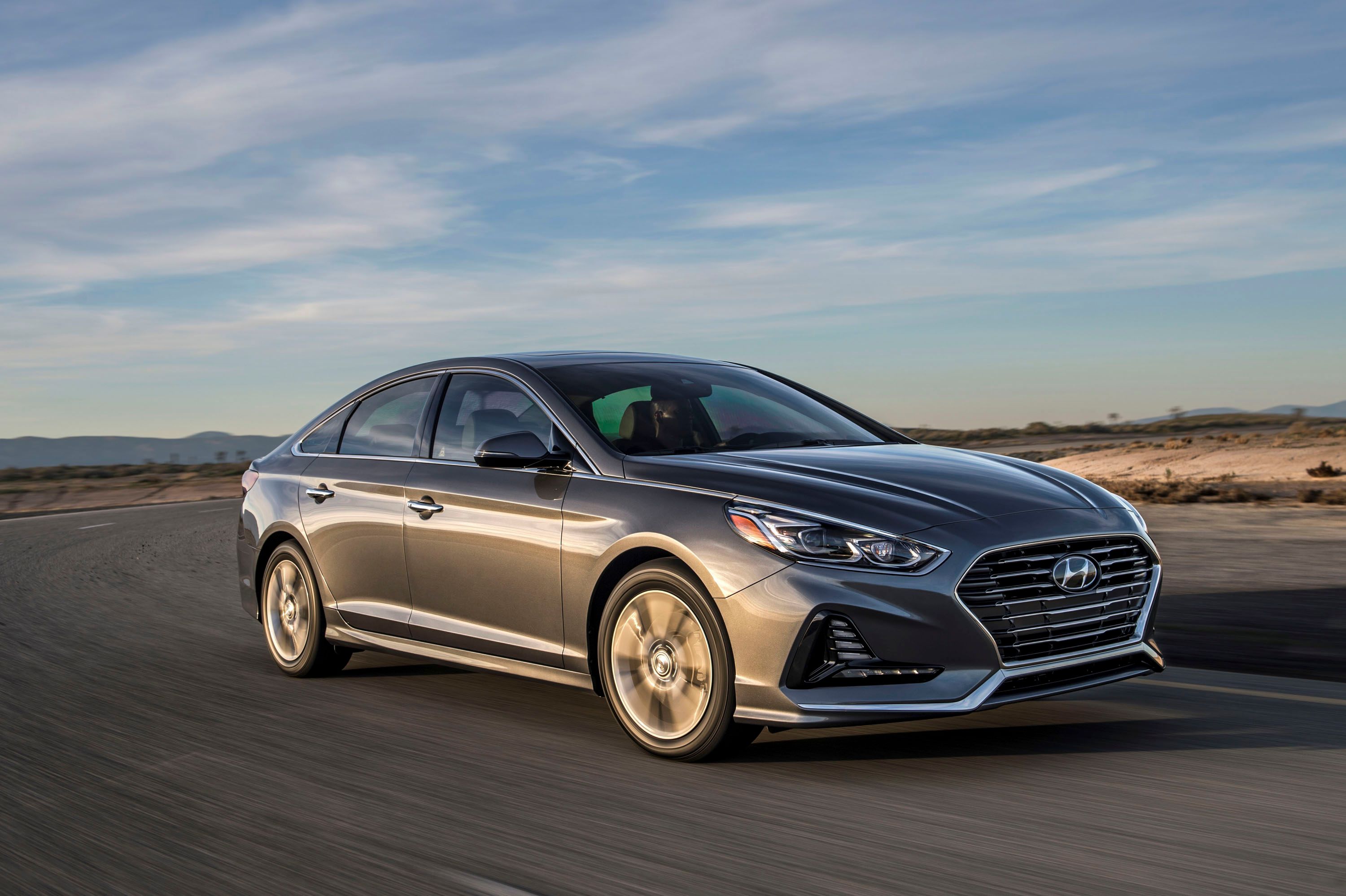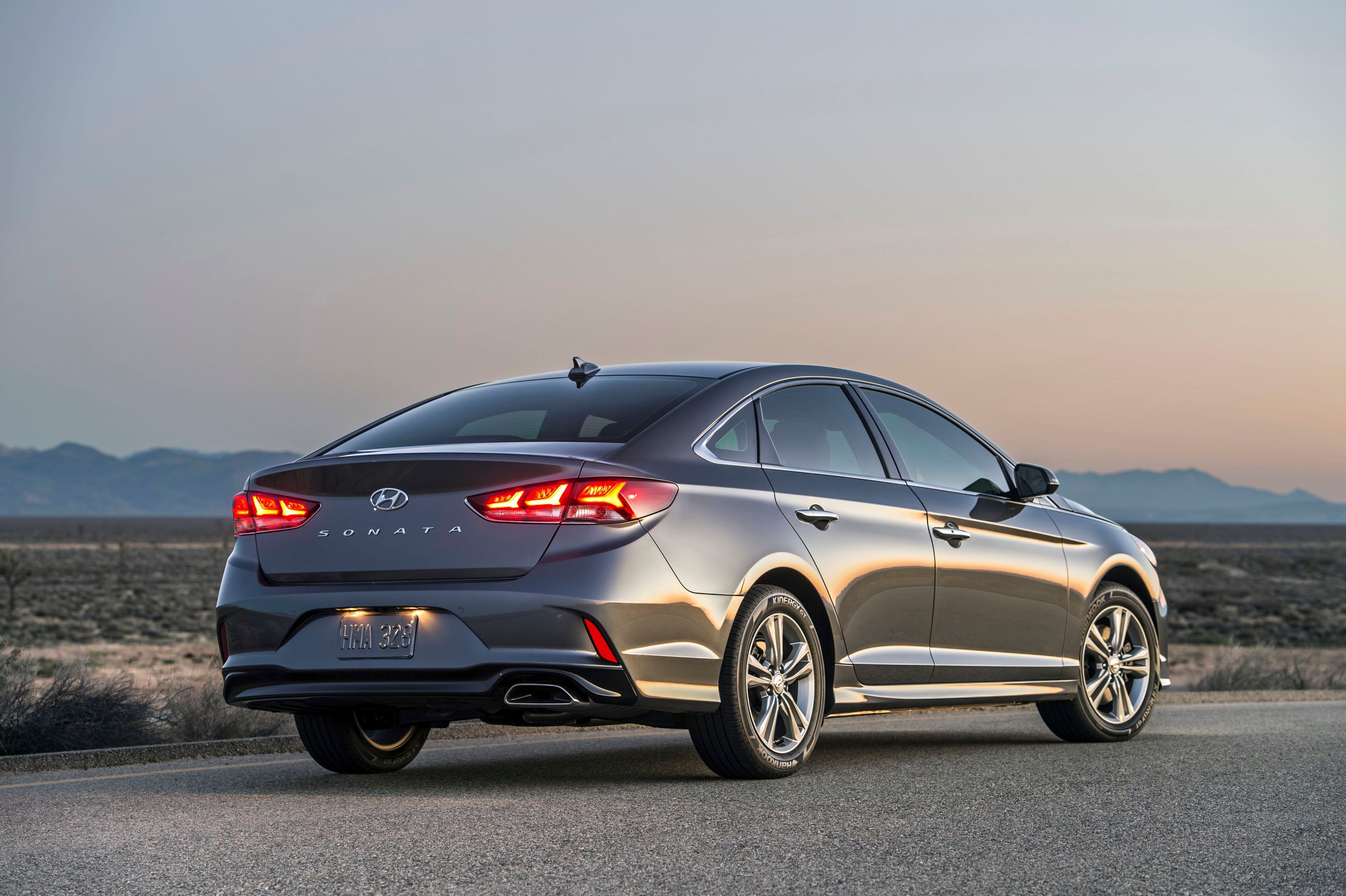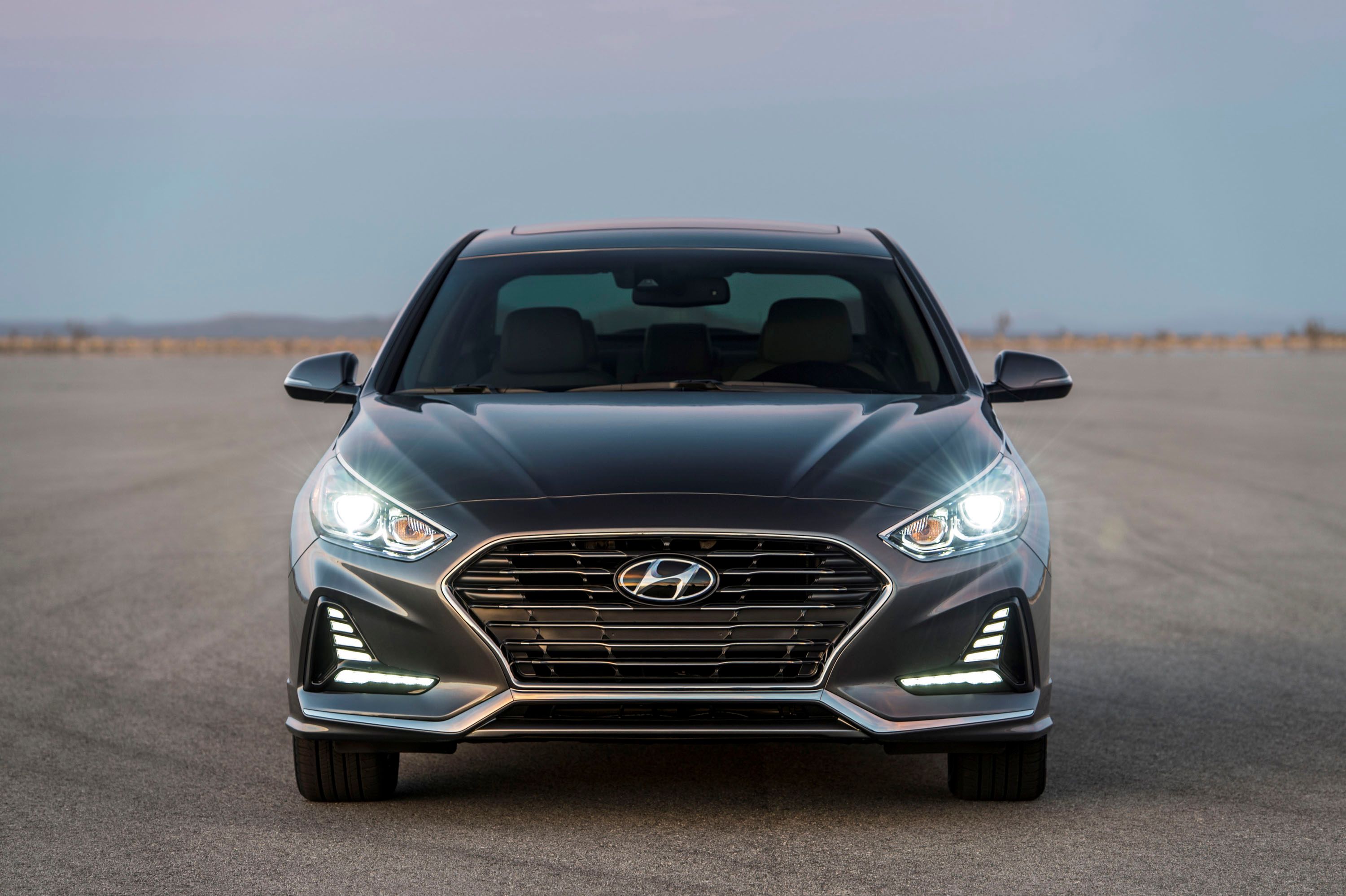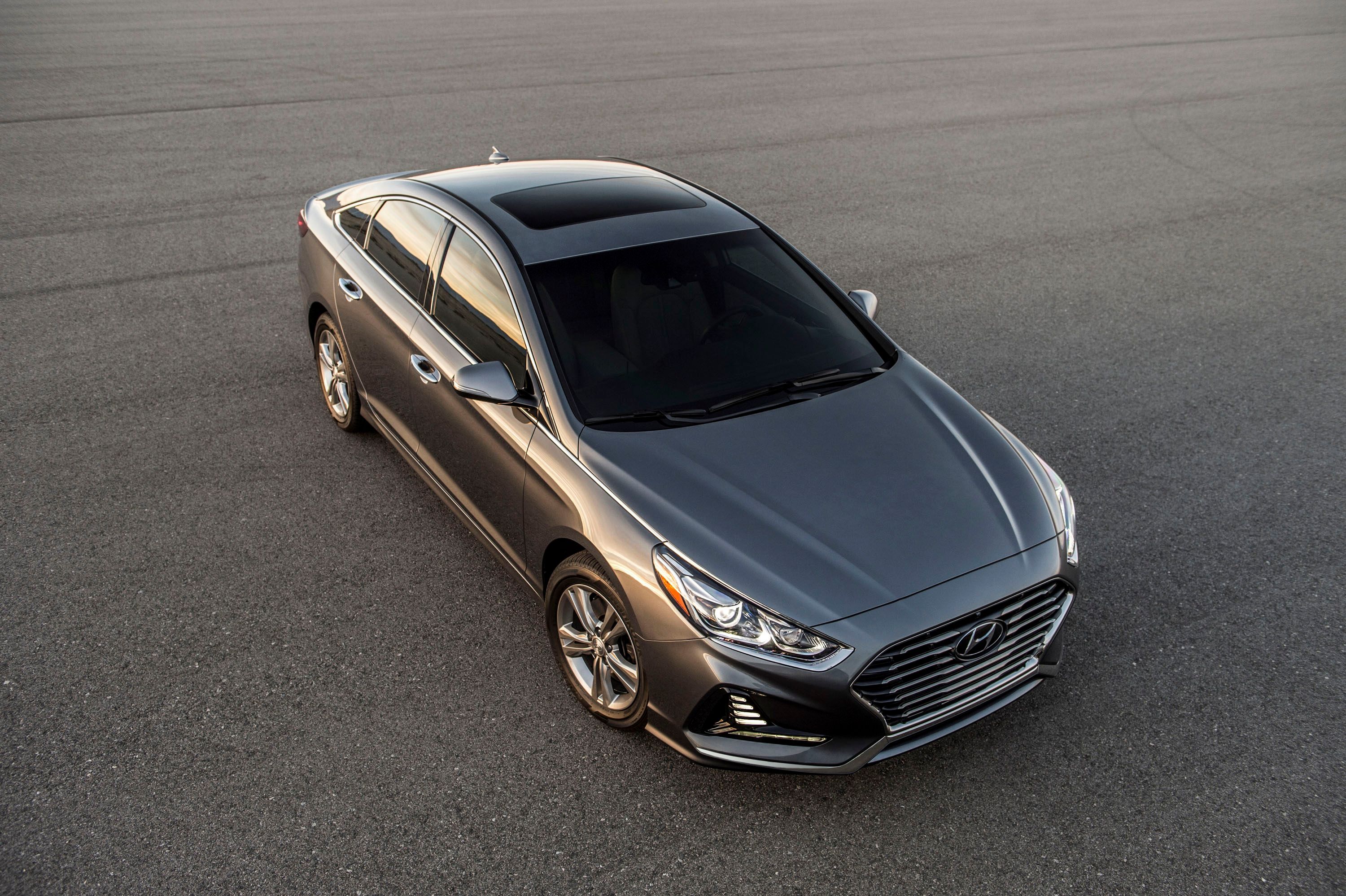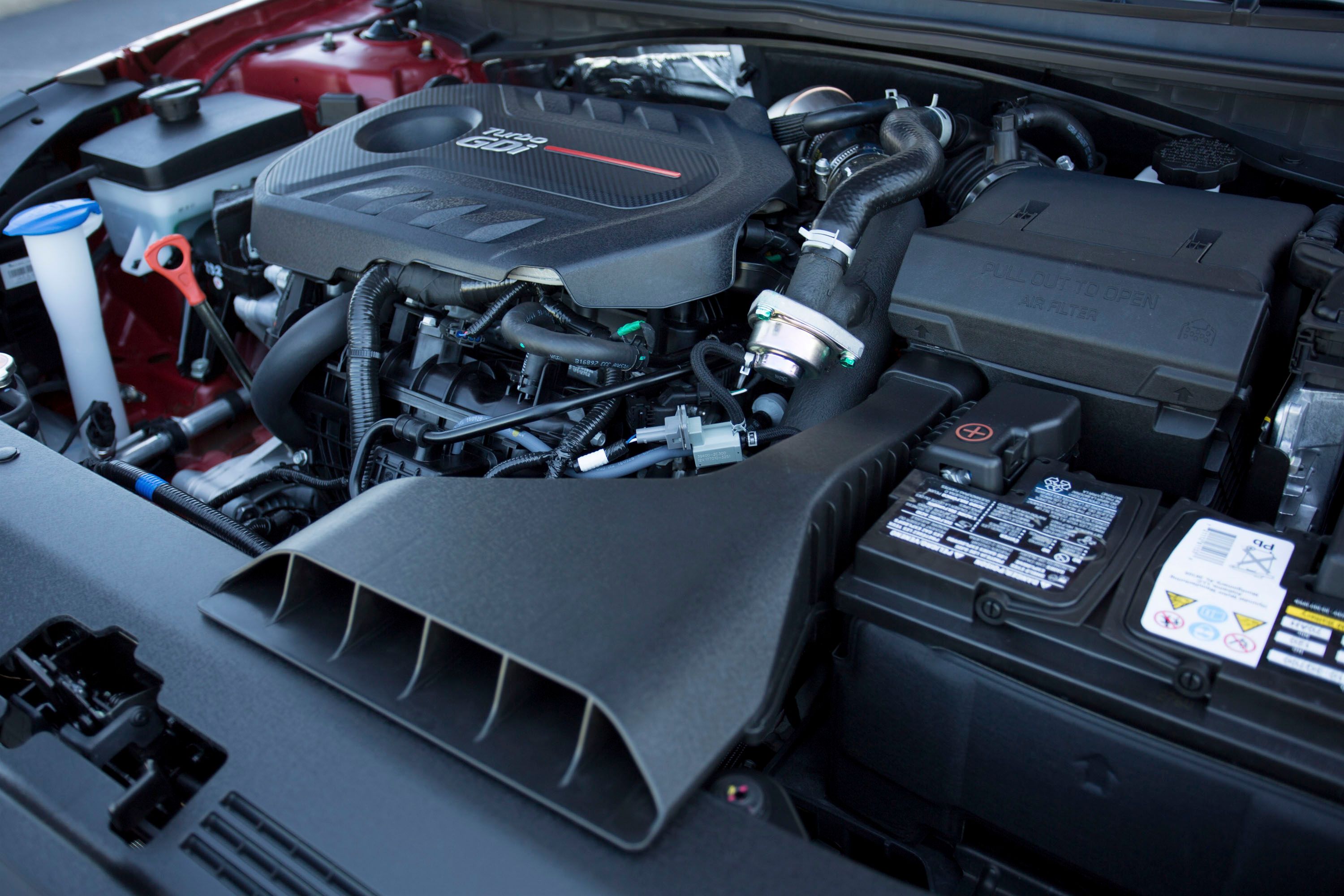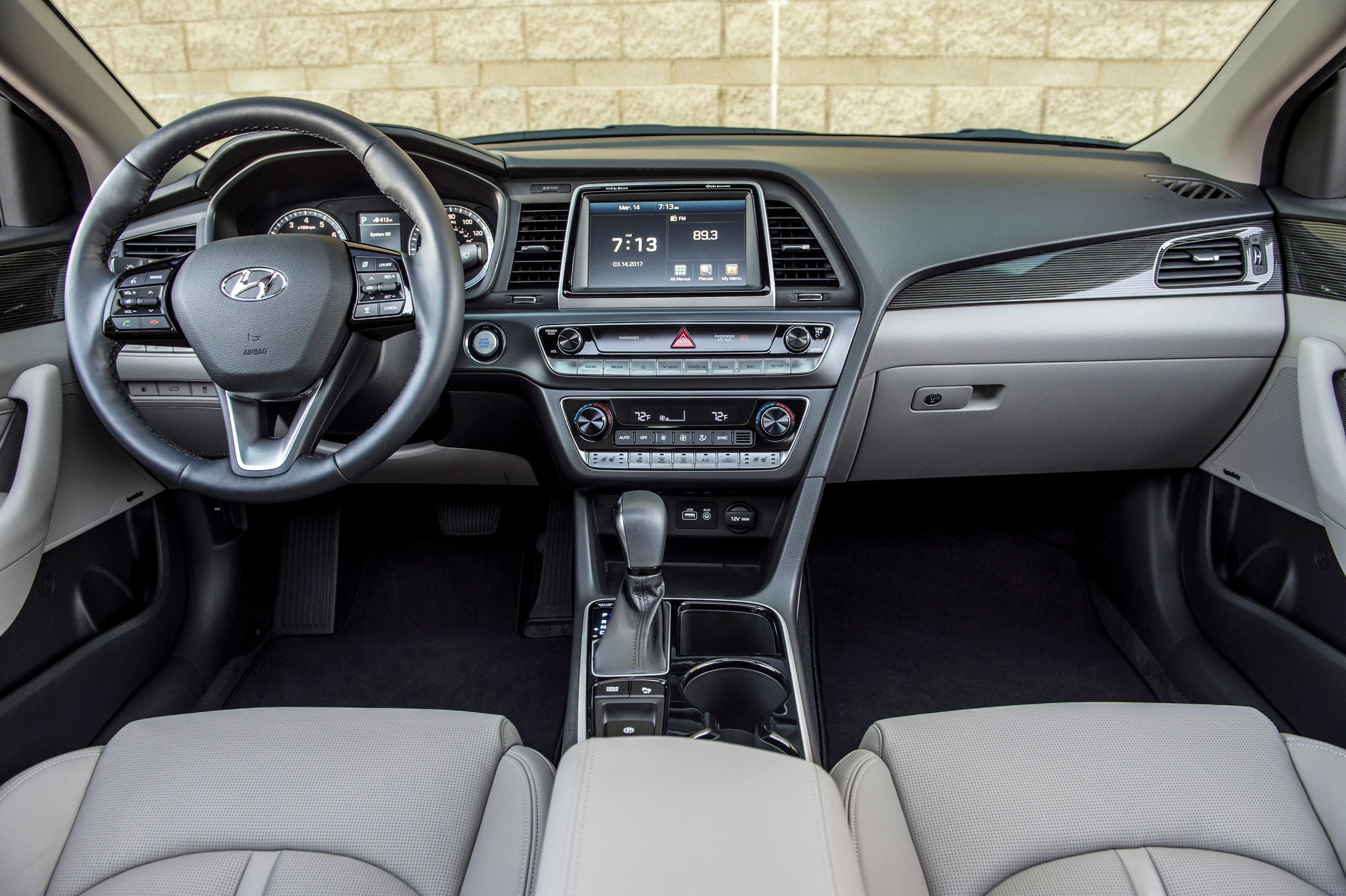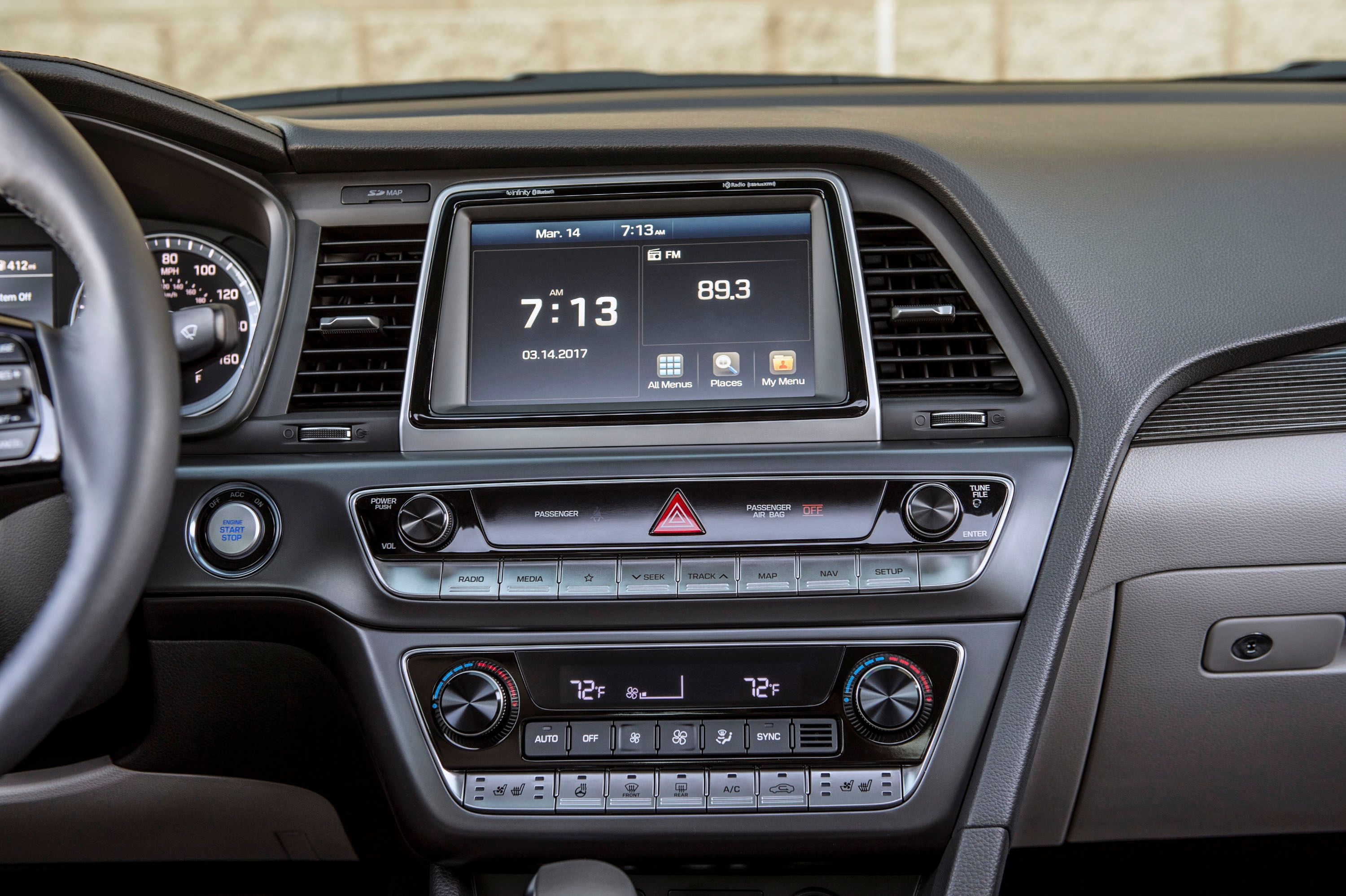At this point, I think it’s safe to classify the Hyundai Sonata as a rock solid standby in the affordable mid-size commuter sedan segment. The nameplate has been in use since 1985, with its current seventh-generation first introduced in 2014. To keep it going strong, Hyundai just announced a newly refreshed iteration for the 2018 model year at this year’s New York International Auto Show, and it’s bringing revised styling, new features, better technology, and updated hardware. All in all, it’s a rather standard mid-cycle facelift for the seventh-gen, but still quite significant in its impact.
In fact, that’s what Hyundai was aiming for all along, especially when it came to the exterior styling. The fresh look incorporates what the automaker calls a cascading grille design up front, plus a “more assertive profile,” and a redesigned rear end outfitted with a new, svelte taillight design.
We think it looks pretty good, moving the aesthetic ahead in a refined, attractive way. Not only does it look nice, but Hyundai also managed to dig under the skin to make it handle better, not to mention make it a little quicker and a bit more efficient as well.
Looking for details? Read on.
Continue reading to learn more about the new Hyundai Sonata.
Why It Matters
Note: 2017 Hyundai Sonata pictured on the left, 2018 Hyundai Sonata pictured on the right.
Compared to the model that came before it, the 2018 Sonata looks sleeker, curvier, and little more premium. The styling elements seem to draw from other brands in higher segments – the front grille, for example, reminds me of Audi’s Singleframe intakes, dominating the nose in one horizontally slated opening. That said, it’s still a nice piece of design, and there are plenty of cues to justify it as a somewhat distinctive aesthetic.
Complementing the new body panels are new wheel designs, with sizing ranging from 16 inches, to 18 inches in diameter. Up front, you’ll find new LED daytime running lights fitted to adaptive headlights, which also come with LEDs. These headlight units will actively bend the light they project around corners as you turn, enhancing safety. The Hyundai badges were also made larger, and there are chrome accents front to back.
Under the body panels is an improved chassis offering a more comfortable ride and sharper handling. Helping to accomplish these goals are stiffer anti-sway bars, as well as larger trailing arms for the rear suspension. The steering was also tweaked for better response and improved feel.
The drivetrain lineup now includes an eight-speed automatic transmission, which is mated to the 245-horsepower 2.0-liter four-cylinder engine, broadening the gear ratio range. This has the combined effect of making the car accelerate more quickly, and making it more efficient when cruising. Michelin provides the tire compounds.
Inside the cabin is a new center stack and instrument panel, with an updated gauge dial design, a new three-spoke steering wheel, and piano key buttons for the audio system and HVAC system. Standard spec includes a 7.0-inch display touchscreen, and Apple CarPlay and Android Auto are both supported. There are more USB ports for rear passengers, as well as a Bird’s Eye View feature for the nav system, plus live traffic info that doesn’t require a subscription. The Sonata also includes the latest safety tech, like blind spot detection and rear cross-traffic alert, while Blue Link is included to integrate with your Amazon Echo. Options include a Qi inductive charger for mobile devices.
It’s a nice bit of kit, and while it won’t blow your socks off when it comes to performance, the enhancements for the 2018 model year do make for an enticing package for anyone looking for comfort and value in a mid-size four-door.


